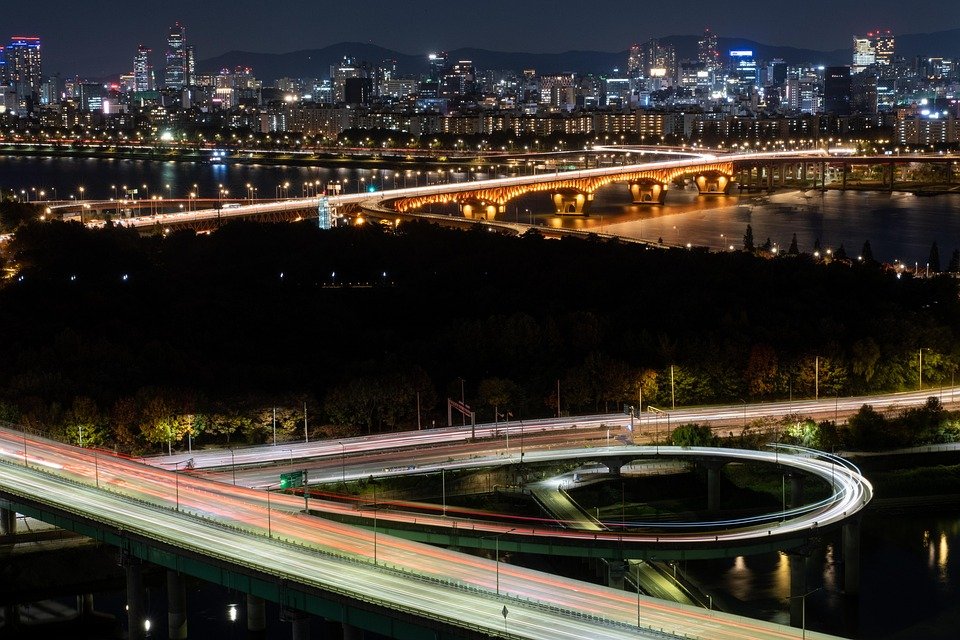Wondering when to go to Seoul without running into huge crowds or bad weather? The answer isn't straightforward, as it depends on various factors like weather, budget, local events, and what you're hoping to do while you're there. With this guide, you'll get a clear picture of when to visit Seoul that aligns perfectly with your travel style.
Overview of Seoul’s Climate
Seoul experiences a mix of seasons, which crafts a unique atmosphere throughout the year. The climate can be generally categorized into four distinct seasons. Winters (December to February) are typically cold, with average temperatures dipping below freezing. In contrast, summers (June to August) can be quite hot, often exceeding 30°C (86°F) and are accompanied by high humidity.
The shoulder seasons of spring (March to May) and autumn (September to November) offer more temperate weather, with milder temperatures and less rainfall. Keep in mind that summer and early autumn can see a fair amount of precipitation due to the monsoon season, so it's worth checking the weather in Seoul before packing your bags.
Month-by-Month Breakdown
Spring (March to May)
March: As winter fades, you'll see temperatures slowly rising, averaging around 10°C (50°F). Events celebrating the arrival of cherry blossoms start popping up. Pro: It's peaceful and less crowded, great for budget travelers. Con: It can be chilly at night. Best for those looking for solitude and a quieter experience.
April: Cherry blossoms bloom in full glory! Average temperatures range between 12°C to 17°C (54°F to 63°F). Major festivals like the Yeouido Spring Flower Festival attract visitors. Pro: Stunning scenery everywhere you look. Con: Hotels can start getting pricier as tourists rush in. Ideal for photographers and nature lovers.
May: This month sees warmer temperatures reaching up to 20°C (68°F). The weather is ideal for street festivals like the Seoul Lantern Festival. Pro: Less rain and beautiful blooms. Con: More tourists, but still manageable. Perfect for festival-goers and outdoor enthusiasts.
Summer (June to August)
June: Average temperatures hover around 25°C (77°F), and the humidity begins to rise. Pro: Start of summer activities in parks and outdoor venues. Con: The humidity can be quite uncomfortable. Best for those who love festival vibes and beach life.
July: Welcome to the monsoon season. Expect rainy days but also vibrant greenery. Average temperatures can reach above 30°C (86°F). Pro: Costs for accommodations usually drop. Con: Not great for outdoor plans due to rain. Ideal for budget travelers who don't mind a little water.
August: Humid and hot. Temperatures don't drop much, averaging 27°C (80°F). Pro: Fewer crowds if you plan on avoiding weekends. Con: Sweltering heat makes sightseeing less enjoyable. Best for indoor activities or museum hoppers.
Autumn (September to November)
September: Early autumn offers a welcome respite from summer heat. Average temps fall to about 22°C (72°F). Some festivals, like the Seoul Kimchi Making Festival, take place. Pro: Fewer tourists and lovely fall foliage. Con: The start of potential rainfall. Ideal for cultural experiences.
October: Known as the best month to visit, temperatures average around 18°C (64°F). The autumn leaves are breathtaking in parks like Namsan and Gyeongbokgung. Pro: Clear skies and comfortable temperatures. Con: Lots of tourists for the fall scenery. Perfect for photographers and outdoor adventurers.
November: Slightly cooler with temperatures dropping to around 10°C (50°F). The fall foliage begins to fade, but there's a cozy ambiance. Pro: Less crowded than October. Con: Can get chilly. Great for those who enjoy a quiet vibe.
Winter (December to February)
December: Expect temperatures around freezing, ranging from -6°C to 5°C (21°F to 41°F). The city lights up with festive decorations for the holidays. Pro: Beautiful winter scenery; ideal for winter sports enthusiasts. Con: Cold weather might deter some travelers. Recommended for those who love a winter wonderland.
January: The coldest month, with heavy snowfall a possibility. Average temperatures are around -5°C (23°F). Pro: Fewer tourists and cheaper flights. Con: Bitterly cold. Great for those willing to brave the chill for solitude.
February: Cold continues, but temperatures slowly start warming up again. Expect average temps around -3°C to 3°C (27°F to 37°F). Pro: Still low tourist traffic. Con: The cold can limit outdoor activities. Ideal for visitors seeking a unique, quiet experience in Seoul.
Tips Based on Travel Style
-
For Budget Travelers: The best times are during the shoulder months like March and November when prices dip and you can still enjoy pleasant weather. Also, consider visiting during the winter months for discounted accommodation.
-
To Avoid Crowds: Late fall and early spring offer a good balance of enjoyable weather and fewer tourists. The quiet vibes can be delightful.
-
For Outdoor Activities or Cultural Events: Spring and autumn are prime times for hiking, flower festivals, and various cultural events. October for fall foliage is unbeatable.
- For Romantic or Solo Trips: The charm of spring or autumn draws in couples, thanks to the mild weather and beautiful scenery. On the flip side, solo travelers might find the winter months provide a more introspective experience.
It really depends on what kind of experience you're looking for. Some travelers love April because of the quiet vibe and cherry blossoms, while others aim for the bustling festivals in October.
FAQ
Is March a good time to visit Seoul?
Yes, if you enjoy cooler weather and fewer tourists. Spring flowers start to bloom!
When is the rainy season in Seoul?
Typically, it occurs from late June to August.
What's the cheapest time to visit Seoul?
Generally, winter months—especially January—offer lower prices on flights and accommodations.
What's the peak season in Seoul?
Autumn, particularly in October, is considered peak season due to the fall foliage and pleasant weather.
So grab your bags and start planning your trip to Seoul!








